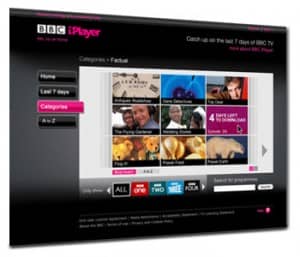 When BBC’s iPlayer was announced in 2004, it was expected that trials of the software would completed by December 2005. By July 2007, Windows-only users were able to use the complicated iPlayer from a download.
When BBC’s iPlayer was announced in 2004, it was expected that trials of the software would completed by December 2005. By July 2007, Windows-only users were able to use the complicated iPlayer from a download.
By December of the same year Anthony Rose, formerly of Kazaa and new recruit to Auntie Beeb’s Future Media & Technology department, had brought content to the masses. iPlayer 1.0 launched at the end of 2007 as a more accessible, video streaming service.
Speaking recently, Rose told CNet UK’s Crave that around 60Gbps are downloaded from iPlayer, equating to around 7.5Gb per second, during their evening peak.
“That turns out to be up to 7 petabytes of data transfer a month,” he added.
Wired magazine last month reported that the future of the iPlayer looked even rosier. 250 people split into 16 teams are working on technology that will allow viewers to start watching programmes on their computers and finish them on their phones. A “Facebook-style friends tab,” the magazine reports, “will take control of how you watch away from the BBC”.
iPlayer 3.0 will also allow for reminding you when your favourite programmes are on, and will download it to your computer while you do something else.
The world of “Broadcast 2.0” looks to be changing the future of how we view. With the BBC in a constant battle to keep their TV license funding, a lot lies in the balance.
Broadcasting outlets without this funding would financially struggle to tread this new technological water- Channel 4 have only just made their On-demand service available to Mac users. So perhaps someone should tell Noel Edmunds where his license fee is actually going.
Good luck Aunty.
